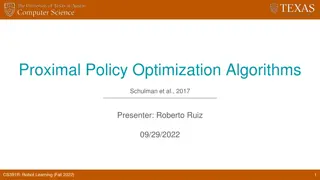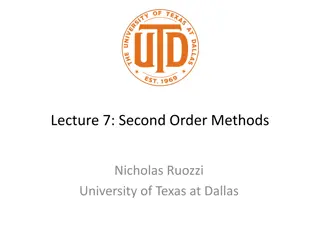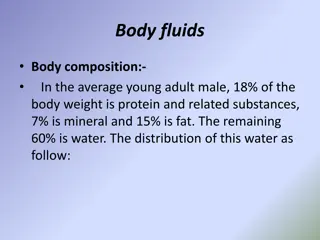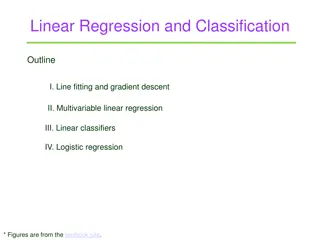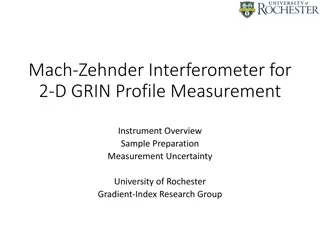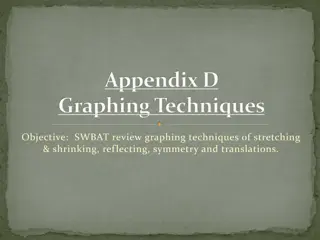
Understanding Gradient Functions in Calculus
Explore the concept of gradient functions in calculus, including differentiation, finding gradients of curves, and understanding how gradients change. Learn about the gradient functions of y = x^2 and y = x^3 and how to calculate gradients at specific points. Discover the significance of positive gradients in increasing functions.
Download Presentation

Please find below an Image/Link to download the presentation.
The content on the website is provided AS IS for your information and personal use only. It may not be sold, licensed, or shared on other websites without obtaining consent from the author. If you encounter any issues during the download, it is possible that the publisher has removed the file from their server.
You are allowed to download the files provided on this website for personal or commercial use, subject to the condition that they are used lawfully. All files are the property of their respective owners.
The content on the website is provided AS IS for your information and personal use only. It may not be sold, licensed, or shared on other websites without obtaining consent from the author.
E N D
Presentation Transcript
The Gradient Function Understand that the gradient of a curve at a point is the gradient of the tangent Understand the notation for differentiation Differentiate using standard results Find the gradient of a function
The Gradient Function For a straight line, the gradient is constant: ? = 3 However, for a curve the gradient varies. We can no longer have a single value for the gradient; we ideally want an expression in terms of ? that gives us the gradient for any value of ? (unsurprisingly known as the gradient function).
The Gradient Function ? = ? ? = ? ? = ?? ? = ? ? = ? ? = ? ? = ? ? = ? ? -3 -2 -1 0 1 2 3 ? ? ? ? ? ? ? Gradient -6 -4 -2 0 2 4 6 By looking at the relationship between ? and the gradient at that point, can you come up with an expression, in terms of ? for the gradient? ???????? ???????? = ?? ?
The Gradient Function of y = x2 The gradient of y = x2 changes at a constant rate and so the gradient function of y = x2 is linear.
The Gradient Function So the gradient of the tangent to the curve y = x2 at the general point (x, y) is 2x. 2x is often called the gradient function or the derived function of y = x2. If the curve is written using function notation as y = f(x), then the derived function can be written as f (x). So, if: f(x) = x2 Then: f (x) = 2x This notation is useful if we want to find the gradient of f(x) at a particular point. For example, the gradient of f(x) = x2 at the point (5, 25) is: f (5) = 2 5 =10
The Gradient of y = x3 So, the gradient of the tangent to the curve y = x3 at the general point (x, y) is 3x2. So if, f(x) = x3 Then: f (x) = 3x2 What is the gradient of the tangent to the curve f(x) = x3 at the point ( 2, 8)? f (x) = 3x2 f ( 2) = 3( 2)2 = 12 The gradient function of f(x) = x3 is of the form f (x) = 3x2 Whatever value x takes 3x2 will always be positive, so the Explain why the gradient of f(x) = x3 will always be positive. gradient will always be positive. f(x) = x3 is an example of an increasing function.
? ? = ???+ ?, ? ? = ???? 1 For example, if y = 2x4 dy dx 4 1 =2 4 = 3 x 8x Suppose we have a function of the form y = c, where c is a constant number. This corresponds to a horizontal line through the point (0, c). The gradient of this line is always equal to 0. y c If y = c dy dx 0 x =0
If ? = ??? then ?? i.e. multiply by the power and reduce the power by 1 ??= ???? 1 (where ?,? are constants) Examples: ?? ??= 5?4 ? Power is 5, so multiply by 5 then reduce power by 5. ? = ?5 The power need not be an integer! Remember to use ? ? not ?? ? ? =1 1 2 2? 1 ?(?) = ? ? 2 ?? ?? ??= 12?5 ? = 2?6 ? Why would it be incorrect to say that ? = ?? differentiates to ?? The rule only works when the base is ? and the power is a constant. Neither is true here! Note that ??is a power of ? whereas 2? is an exponential term (which you will encounter more at A-level), and therefore differentiate differently. You will learn how to differentiate exponential terms in Year 13. ??= ? ?? ?? ? ?4= ? 3 ? ? = 3? 4 ? ? ? ? = ?? ??= 3?2 ? ? ?6= ?3 ? ? =
Your Turn Find the gradient of the curve y = 3x4 at the point ( 2, 48). dy dx 3 =12 x Differentiating: At the point ( 2, 48) x = 2 so: dy dx 3 =12( 2) =12 8 = 96 The gradient of the curve y = 3x4 at the point ( 2, 48) is 96.
Differentiating Polynomials Suppose we want to differentiate a polynomial function. For example: Differentiate y = x4 + 3x2 5x + 2 with respect to x. dy dx We can differentiate each term in the function to give . dy dx = 4x3+ 6x 5 So: In general, if y is made up of the sum or difference of any given number of functions, its derivative will be made up of the derivative of each of the functions. dy dx If = ( ) ( ) then y f x = '( ) '( ) x g x f g x
Differentiating Polynomials Differentiate ? = ?2+ 4? + 3 First thing to note: If ? = ? ? + ? ? then ?? ??= ? ? + ? ? i.e. differentiate each term individually in a sum/subtraction. ?? ??= 2? + 4 ? ? ? ? = 4? = 4?1 ? = 3 = 3?0 Therefore applying the usual rule: ?? ??= 4?0= 4 Therefore applying the usual rule: ?? ??= 0? 1= 0 Alternatively, if you compare ? = 4? to ? = ?? + ?, it s clear that the gradient is fixed and ? = 4. Alternatively, if you sketch ? = 4, the line is horizontal, so the gradient is 0.



